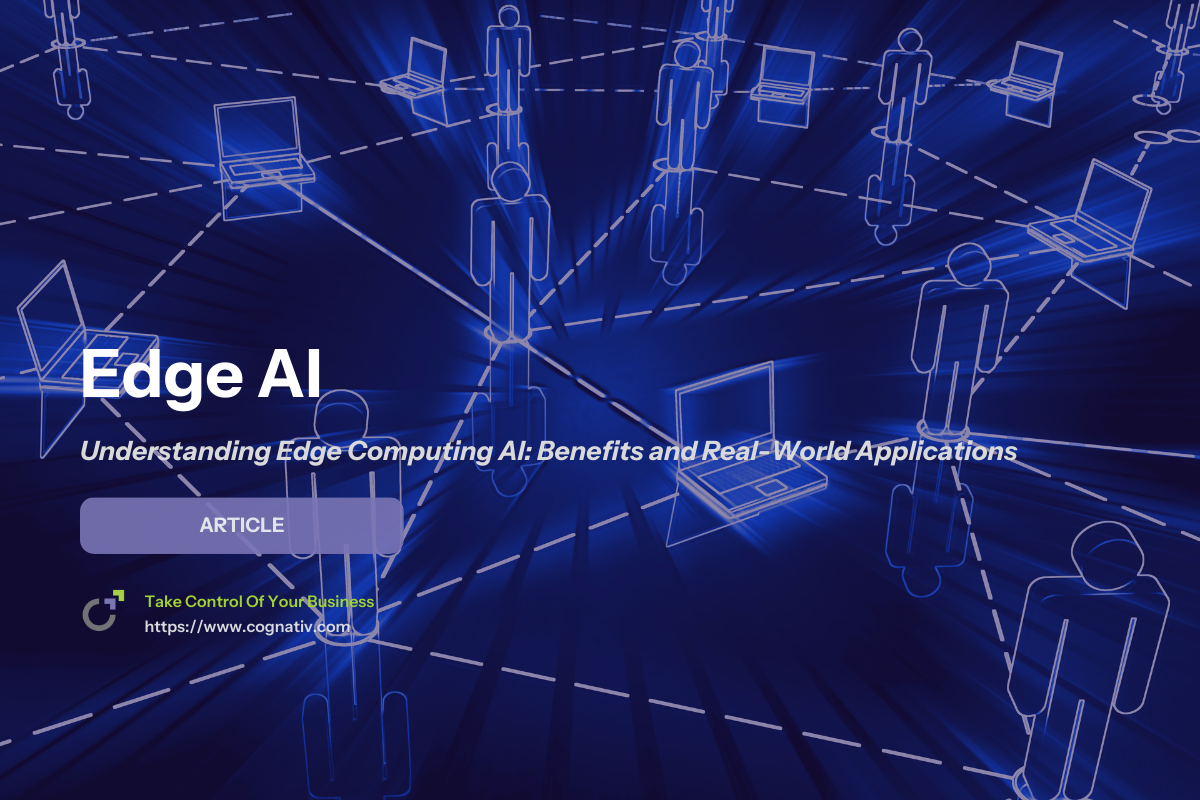Understanding Edge Computing AI: Benefits and Real-World Applications
Edge Computing AI, often referred to as Edge AI, is the integration of edge computing and artificial intelligence. This approach enables processing data directly on edge devices, such as IoT sensors, cameras, smartphones, and smart home appliances, without depending on constant connectivity to a cloud computing facility or centralized data center.
Unlike traditional cloud computing, where raw data transmission occurs to remote cloud servers, Edge AI processes information locally at the edge of the network. This allows data generated by devices to be analyzed immediately, supporting real time decision making and eliminating delays caused by network congestion.
The benefits of Edge AI include:
Reduced latency for applications requiring real time data processing.
Improved privacy by keeping sensitive data stored locally.
Cost savings by lowering reliance on bandwidth and cloud services.
Enhanced resilience in environments with limited internet connection.
In essence, Edge Artificial Intelligence makes it possible for devices to act autonomously, leveraging machine learning algorithms and AI models to analyze data and respond without human intervention.
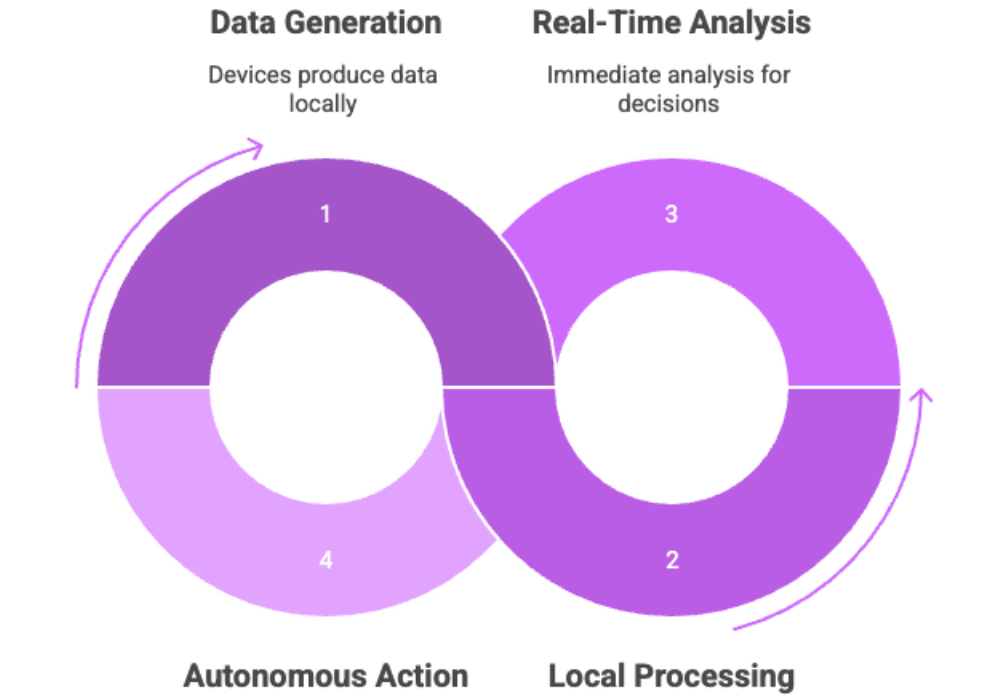

Benefits of Edge AI
The benefits of Edge AI span across industries and use cases, providing tangible improvements in efficiency and security.
1. Reduced Latency and Faster Responses
By moving computation to the intelligent edge, organizations minimize delays. For example, in autonomous driving, milliseconds matter. Edge computing AI processes sensor data instantly, reducing the risk of accidents.
2. Improved Data Privacy and Security
Instead of sending data to a centralized cloud, edge devices process information locally. This reduces exposure to security risks, safeguards sensitive data, and supports compliance with regulations such as GDPR and HIPAA.
3. Operational Efficiency
Edge AI supports predictive maintenance, quality control, and supply chain analytics. Manufacturing plants, for instance, use edge AI models to monitor equipment health and detect anomalies before they lead to costly downtime.
4. Lower Costs
Minimizing reliance on cloud data centers saves costs associated with bandwidth, storing data, and centralized computation. Organizations gain cost efficiency while unlocking new AI applications.
5. Real-World Transformation
From smart factories to smart cities, the ability to process data locally enables innovations in transportation, healthcare, and home automation, reshaping how services are delivered.


AI Applications
The growth of AI applications powered by edge technology is accelerating. Edge AI supports use cases across various domains:
Smart Cities: Cameras and IoT sensors embedded in city infrastructure leverage computer vision for traffic management, crowd control, and emergency response. This reduces congestion and enhances public safety.
Healthcare: In hospitals, medical imaging can be analyzed locally, providing rapid diagnosis without transferring sensitive data to external servers.
Industrial Automation: AI models deployed on edge servers optimize workflows, improve quality control, and enable autonomous robots to respond dynamically to their environments.
Smart Homes: Smart home devices use Edge AI for tasks like adjusting lighting, climate, and security systems in real time, without depending on remote connectivity.
Autonomous Vehicles: Cars rely on edge AI models to analyze real time data from cameras, radar, and LIDAR. This ensures safety by enabling real time decision making.
These AI applications highlight the flexibility of AI at the edge, transforming industries by enabling localized, immediate responses.
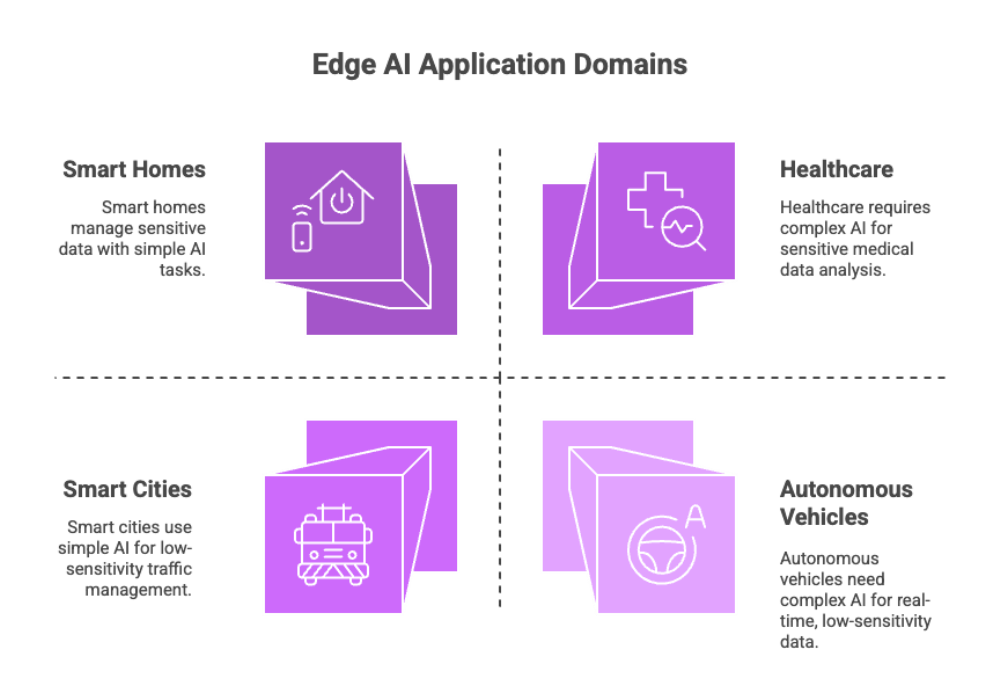

Data Processing and Analysis
At the heart of Edge Computing AI lies its ability to handle data processing directly where data is collected.
Real Time Data Processing: Instead of storing raw inputs in cloud data centers, edge devices apply AI algorithms for instant insights.
Computer Vision: Visual data from cameras is processed at the edge for tasks like object detection, facial recognition, and video analytics.
Predictive Analytics: By analyzing historical patterns and live inputs, edge AI platforms enable proactive responses — from factory equipment maintenance to retail demand forecasting.
Feedback Loops: Although processing data locally is critical, feedback loops can send aggregated insights back to cloud computing for retraining AI models with big data, ensuring continuous improvement.
This balance between local data handling and centralized cloud learning exemplifies the hybrid power of edge and cloud computing.
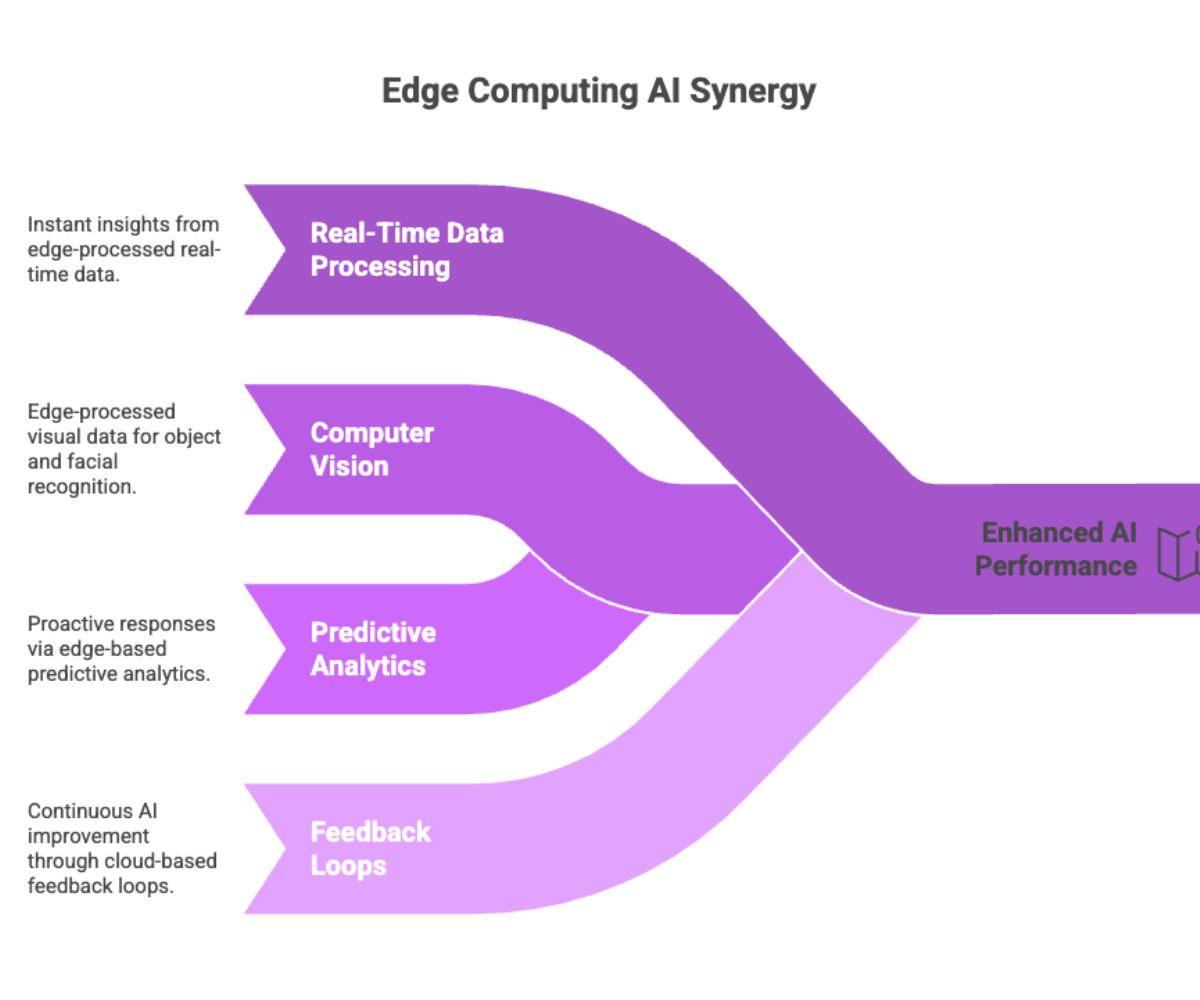

Future Trends in Edge Computing AI
The evolution of edge computing AI is shaping the way industries collect data, process information, and deploy AI applications. Several key trends are expected to accelerate adoption:
Integration with 5G and Multi-Access Edge Computing (MEC)
The rollout of 5G networks combined with multi access edge computing will enable ultra-low latency, essential for autonomous vehicles, smart manufacturing, and real time decision making.
MEC extends computing closer to the network edge, making AI at the edge faster and more reliable.
Advanced AI Models at the Edge
While early edge AI models are lightweight, advances in AI algorithms and deep learning will make it possible to run complex AI tasks on local edge devices.
The use of AI accelerators and specialized AI hardware will further reduce reliance on cloud servers.
Federated Learning and Data Privacy
To address concerns around sensitive data, federated learning enables AI models to be trained across multiple devices without sending data to centralized cloud platforms.
This approach enhances security, complies with data regulations, and enables data locally to contribute to AI applications.
Edge-to-Cloud Synergy
Future AI systems will adopt hybrid architectures, where cloud computing facilities focus on large-scale model training, while edge devices focus on processing data directly for immediate insights.
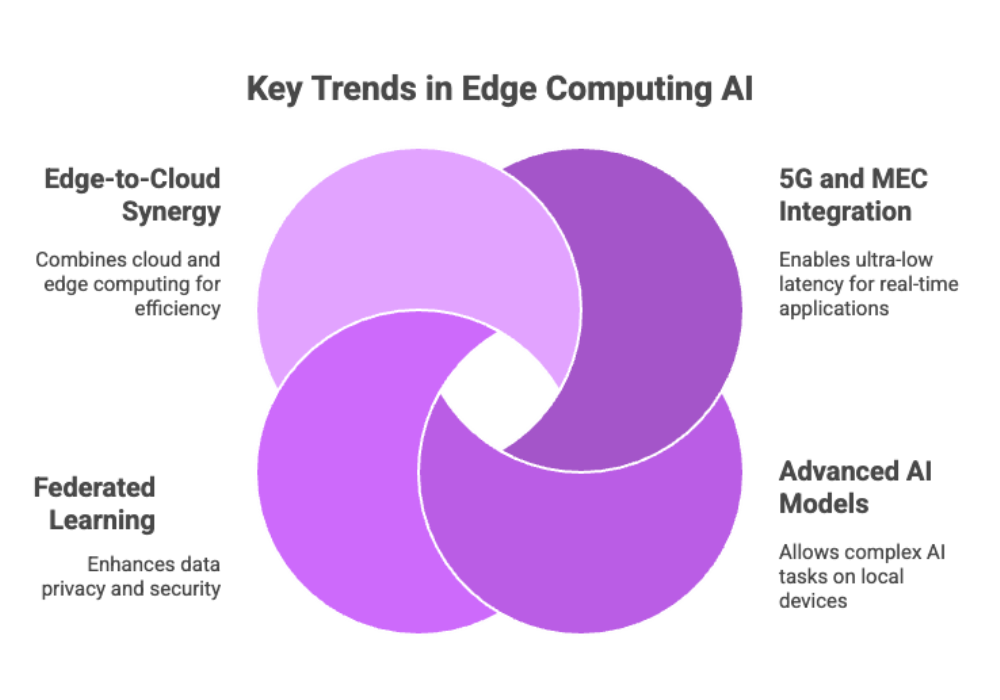

Business Adoption of Edge AI
Organizations across industries are integrating edge AI technology into business operations to optimize workflows and improve competitiveness.
Manufacturing: Predictive maintenance powered by sensor data reduces downtime and enhances efficiency.
Healthcare: Real-time data processing on smart devices supports medical imaging and diagnostics while protecting sensitive data.
Retail: Smart checkouts and AI applications in customer behavior analysis reduce wait times and provide personalized recommendations.
Smart Cities: Edge AI platforms help optimize energy usage, manage traffic flows, and improve public safety.
Transportation: From self driving cars to logistics, edge AI systems support real time decision making and predictive analytics.
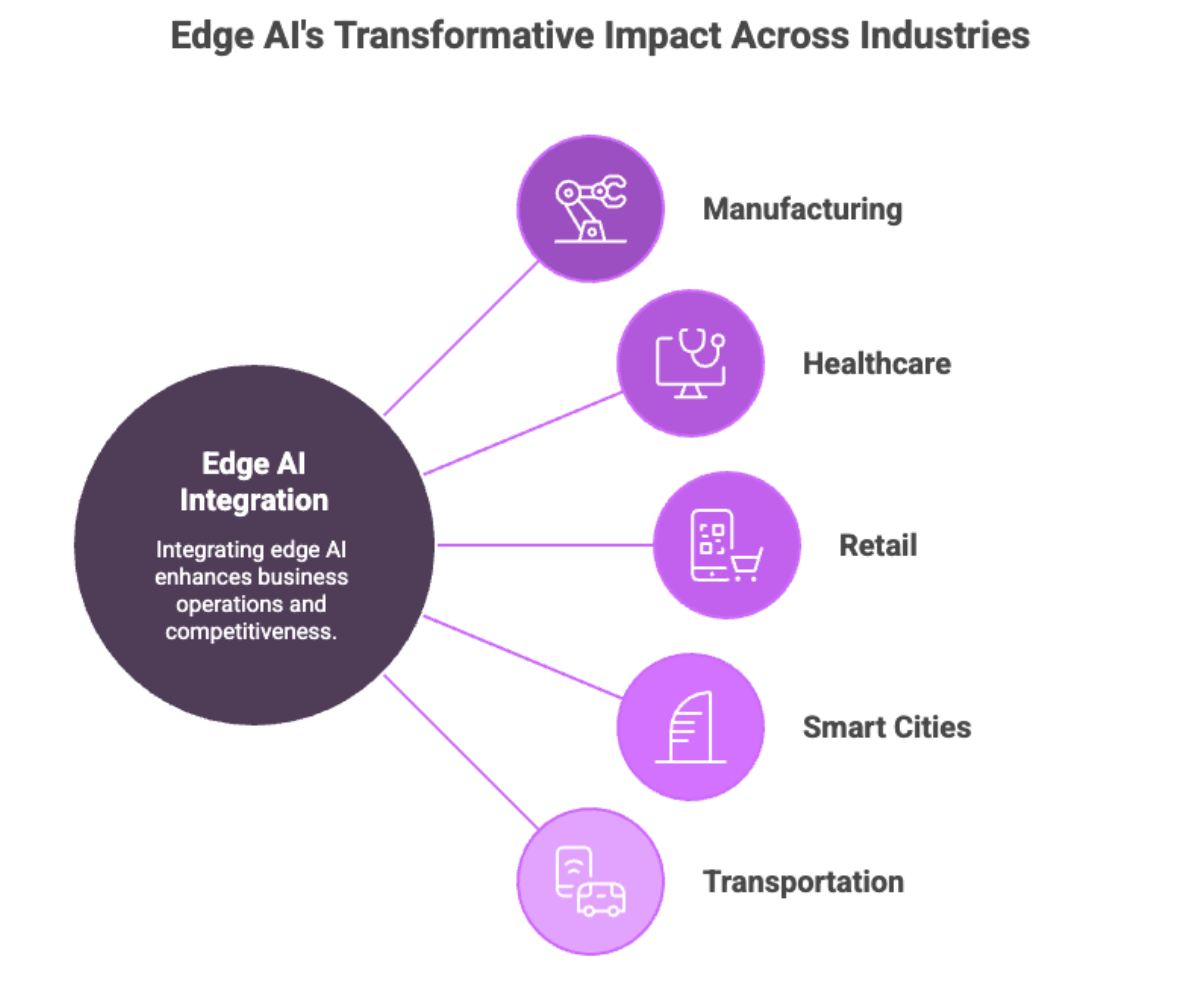

Strategic Benefits for Enterprises
Enterprises adopting edge computing AI gain a competitive advantage through:
Reduced Latency: Instant insights through processing data locally.
Operational Efficiency: Optimizing workflows with predictive analytics and quality control.
Enhanced Security: Keeping sensitive data on local edge devices reduces risk.
Cost Savings: Less data transmission to centralized cloud data centers reduces bandwidth costs.
Scalability: Distributed AI enables deployment across thousands of connected devices in various industries.
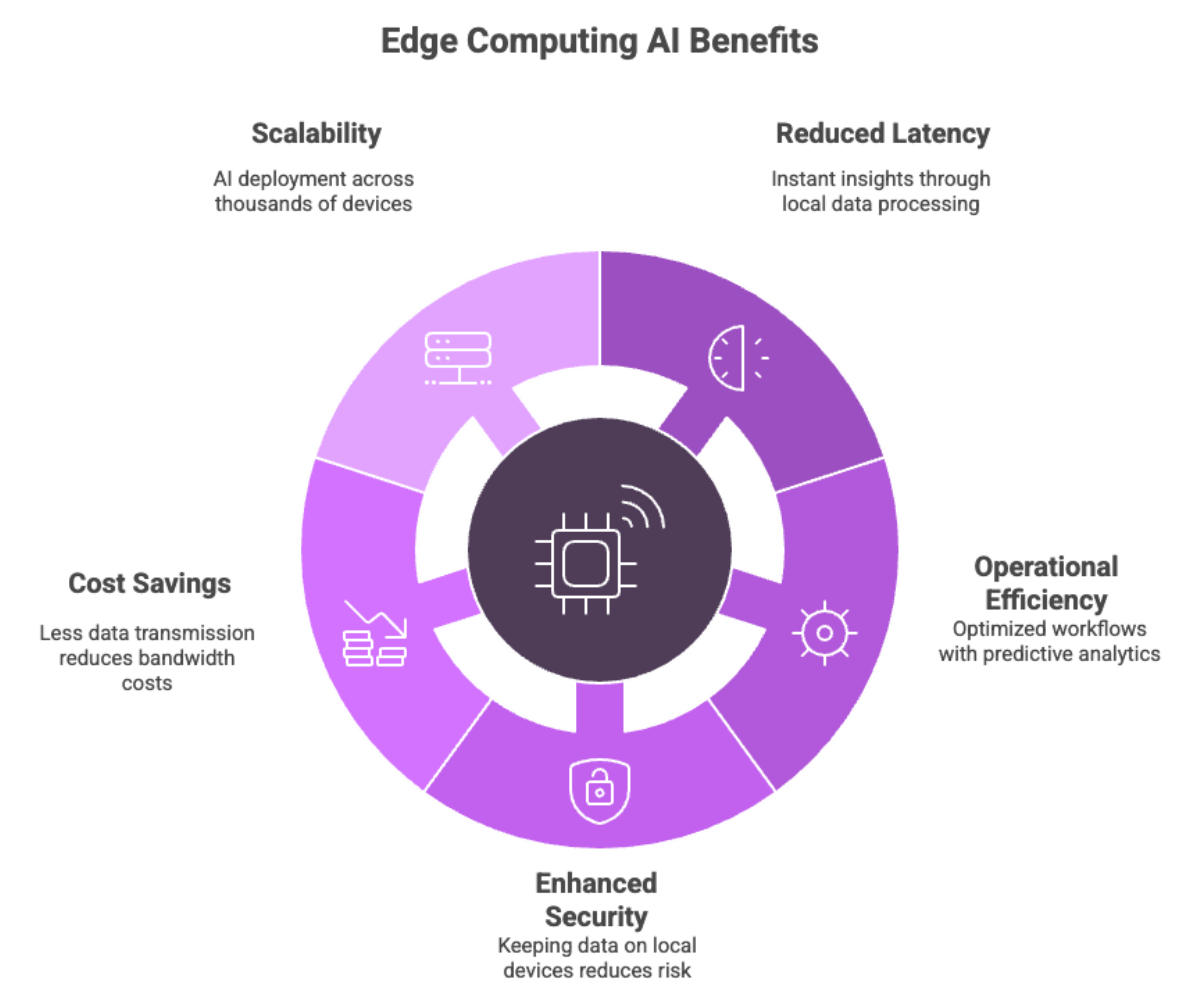

Challenges and Considerations
While edge computing AI delivers significant benefits, businesses must overcome challenges:
Resource Constraints: Edge devices often have limited computing power compared to cloud infrastructure.
AI Model Management: Deploying, updating, and scaling AI models across diverse edge environments requires advanced edge AI platforms.
Security Risks: Although edge AI offers enhanced privacy, physical devices can still be vulnerable to tampering.
Talent Gaps: The demand for data scientists and engineers with expertise in AI and edge computing exceeds supply.
Companies investing in specialized hardware, AI software platforms, and cloud-based platforms for training processes can mitigate these challenges.
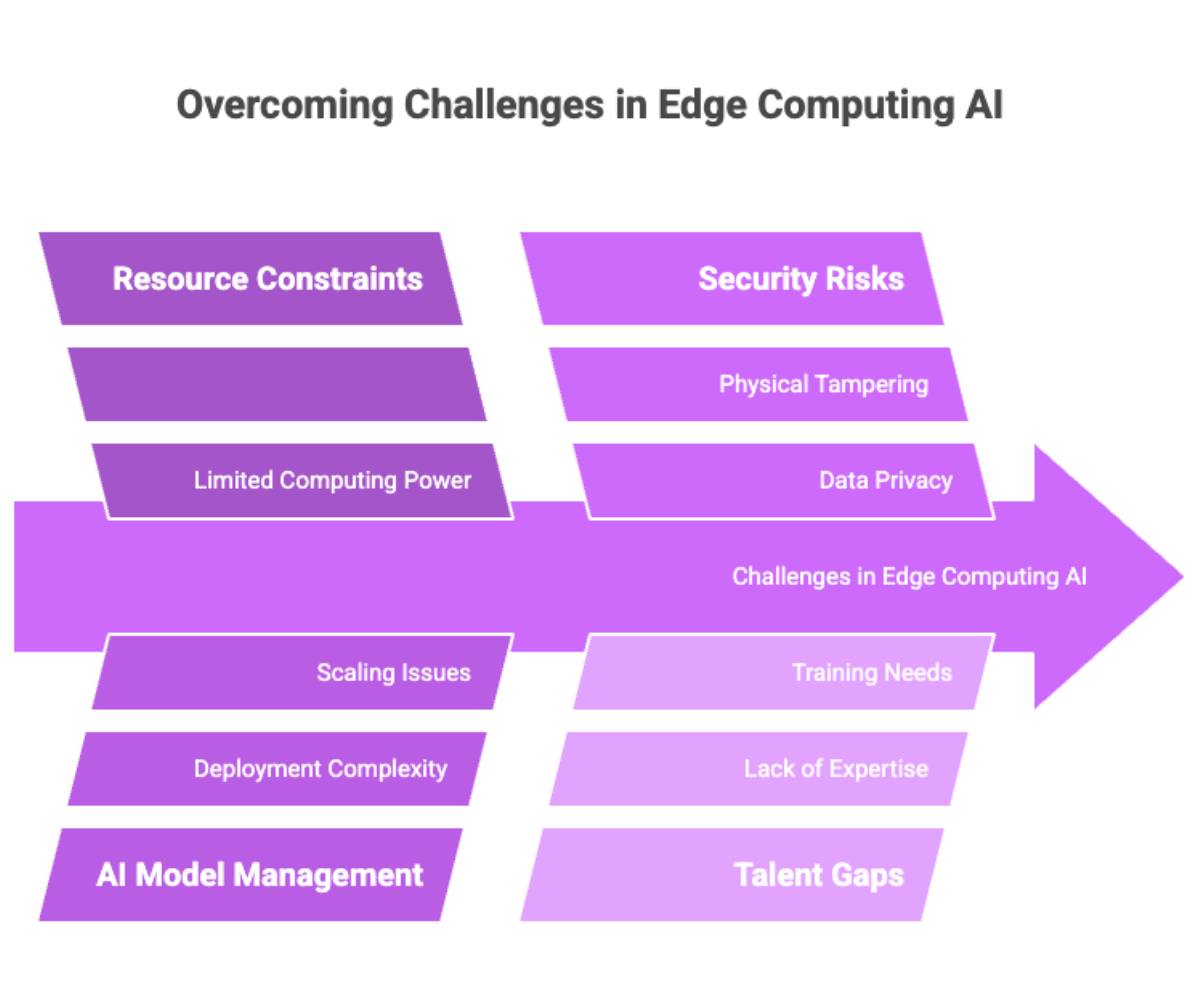

Real-World Outlook
The future of edge computing AI will redefine AI applications in daily life and enterprise ecosystems:
Smart Factories: Autonomous robots and intelligent inspection systems will drive operational efficiency.
Healthcare Providers: Near real time data processing in diagnostics will save lives.
Autonomous Vehicles: Cars will make split-second decisions at the edge, improving worker safety and reducing accidents.
Smart Homes: Smart devices with embedded edge artificial intelligence will enhance comfort, security, and energy efficiency.
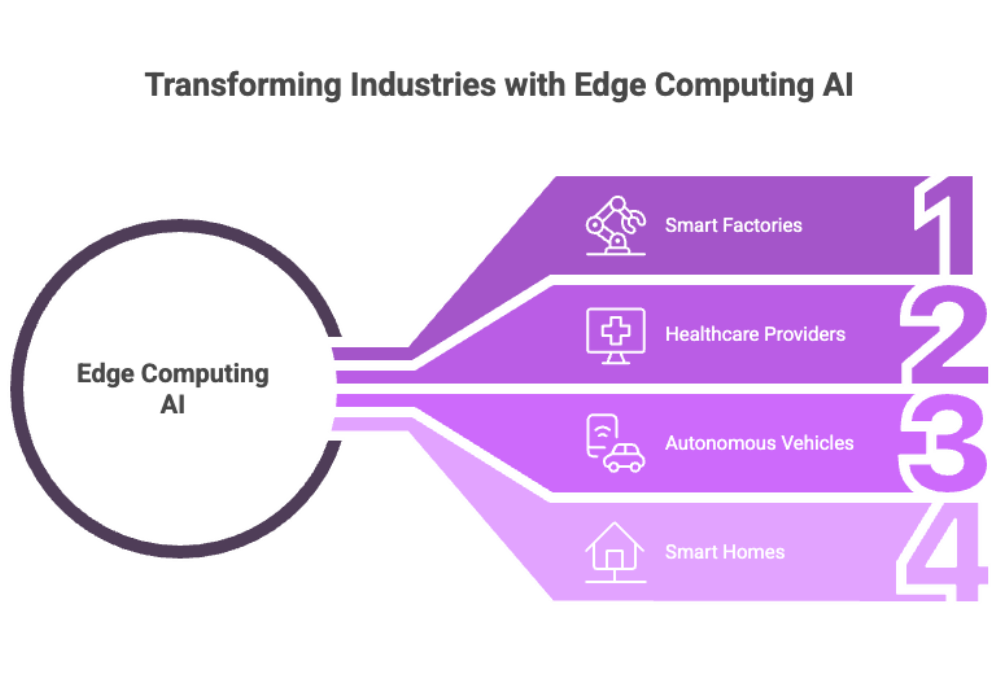

Conclusion
The answer to what is edge AI lies in its ability to merge edge computing and artificial intelligence into a system that brings intelligence closer to where data is generated.
By leveraging edge AI solutions, businesses gain reduced latency, cost savings, and enhanced privacy, while enabling real time decision making. As industries continue to adopt distributed AI and multi access edge computing, the future promises smarter cities, autonomous vehicles, and more efficient business operations.
Edge AI is not just a trend — it is the foundation of the next era of intelligent computing.

